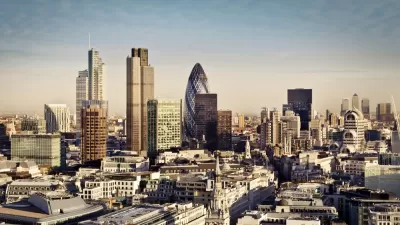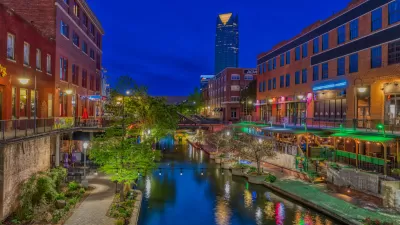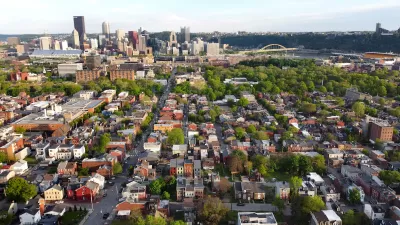An essay identifies imperatives for a new theory of tall, dense construction, and begins to sketch out a theory that will reconcile the skyscraper with contemporary business ideals.

Diana Lind's essay from the book The Future of the Skyscraper is available in full on Medium. Lind joins a distinguished group of writers in that book, with an essay that tests "the idea of building tall against the more sprawling needs of new industries."
Lind launches the essay's argument by citing the emblematic design of Facebook's headquarters, an adaptive reuse of the suburban office park once used by Sun Microsystems. The campus, argues Lind, embodies the tenants of New Urbanism, which is not necessarily a good thing. "This kind of deceptive architecture, devoid of theory but heavy on fantasy, has become not just the norm but a vogue of our times," writes Lind. "While contemporary aesthetics may profess to aspire to authenticity, the real and the sincere are often confused today with a fetishization of the past."
Moreover: "At a time of increasing resource scarcity and environmental stress, we should be shunning office parks like that of Facebook’s, built a ninety-minute car commute from the urban core where most of its employees live. With population growth and rising rents showing no sign of abating, low-density, New Urbanist designs simply cannot accommodate the demand of more than seven billion people on the planet."
The question posed by the essay is how to reconcile the skyscraper, assuming it brings economic, social, and environmental benefits, with the aesthetics of contemporary business. Some of that potential for reconciliation, according to Lind, acknowledges the shortfalls of how skyscrapers have been built in New York and other cities. Lind even agrees with the teachings of New Urbanism on the common skyscraper's negative effect on the human experience of the street.
To start the skyscraper on a path to rebirth, Lind suggests a surprisingly obvious concept: style. According to Lind, "[i]t is imperative that a new theory for skyscrapers be developed, one that will accommodate our culture’s values."
Read through the article for more on what that theory looks like.
FULL STORY: The Form Could Be Reborn

Alabama: Trump Terminates Settlements for Black Communities Harmed By Raw Sewage
Trump deemed the landmark civil rights agreement “illegal DEI and environmental justice policy.”

Study: Maui’s Plan to Convert Vacation Rentals to Long-Term Housing Could Cause Nearly $1 Billion Economic Loss
The plan would reduce visitor accommodation by 25% resulting in 1,900 jobs lost.

Planetizen Federal Action Tracker
A weekly monitor of how Trump’s orders and actions are impacting planners and planning in America.

Waymo Gets Permission to Map SF’s Market Street
If allowed to operate on the traffic-restricted street, Waymo’s autonomous taxis would have a leg up over ride-hailing competitors — and counter the city’s efforts to grow bike and pedestrian on the thoroughfare.

Parklet Symposium Highlights the Success of Shared Spaces
Parklets got a boost during the Covid-19 pandemic, when the concept was translated to outdoor dining programs that offered restaurants a lifeline during the shutdown.

Federal Homelessness Agency Places Entire Staff on Leave
The U.S. Interagency Council on Homelessness is the only federal agency dedicated to preventing and ending homelessness.
Urban Design for Planners 1: Software Tools
This six-course series explores essential urban design concepts using open source software and equips planners with the tools they need to participate fully in the urban design process.
Planning for Universal Design
Learn the tools for implementing Universal Design in planning regulations.
Caltrans
Smith Gee Studio
Institute for Housing and Urban Development Studies (IHS)
City of Grandview
Harvard GSD Executive Education
Toledo-Lucas County Plan Commissions
Salt Lake City
NYU Wagner Graduate School of Public Service





























